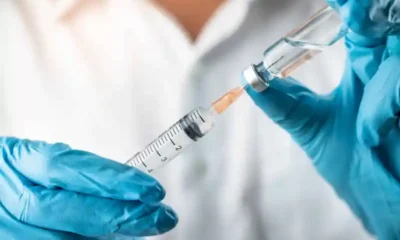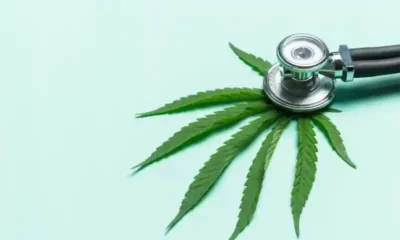Connect with us
Published
3 years agoon

In 2019, faculty in the College of Agricultural, Consumer, and Environmental Sciences at New Mexico State University (NMSU) were given the all clear by state officials to begin research into hemp cultivation, which became legal to grow that same year.
Research efforts since then have focused on understanding hemp agronomics under a regulatory system established by the New Mexico Department of Agriculture. NMSU has partnered with growers in southern New Mexico such as Las Cruces-based Rich Global Hemp to help them understand the area’s soil quality.
“In 2019, when growing hemp became legal, there was a tremendous number of farmers who got into it but didn’t realize what they were in for,” said Jeffrey Anderson, agronomy and horticulture agent for the Doña Ana County Cooperative Extension Service. “Hemp has nutritional deficiencies they didn’t know about, and those who were good enough farmers were able to recognize and correct it.”
Anderson says he has recently seen a renewed interest in companies looking to grow hemp in the area, but cautions certain areas of the state are more amenable to certain forms of hemp then others.
“As you go north, hemp is easier to grow outdoors than here,” he said. “Right now, there’s a glut in hemp CBD oil because there’s not enough processors to deal with it.”
Anderson hopes to bring back NMSU’s successful hemp conference, and is planning an in-person conference for 2022.
Although there continues to be great enthusiasm surrounding the possibilities of hemp cultivation in New Mexico, more research needs to be done regarding risks and benefits, and how guidelines and policies should be developed across the state.
“Including the Navajo Nation,” said Kevin Lombard, superintendent of the NMSU Agricultural Science Center (ASC) in Farmington, New Mexico.
The Agricultural Science Center in Farmington is the only one within the NMSU Agricultural Experiment Station system west of the Continental Divide, and the only 1862 land-grant science center working directly on sovereign First Nations, Navajo Nation, land.
Unique research taking place at the center includes potatoes, corn, alfalfa, small grains, fruit crops and hops.
Until recently, hemp was grown in Farmington, but Lombard says the ASC is taking a break from plot work. NMSU signed a memorandum of understanding with the Navajo Agricultural Products Industry two years ago to explore the feasibility of growing hemp in Northwest New Mexico.
Since then, Lombard and a team of researchers and members of the Navajo Agricultural Products Industry have focused their study on three hemp cultivars—Cherry Wine, Sweetened, and Wife—to determine whether they could be grown within state THC harvest requirements of, at, or below 0.3 percent.
“The most active interest in New Mexico hemp production is currently CBD extraction and many other proclaimed health, food, fiber, and industrial uses,” Lombard said.“Overall, the first year was successful in terms of beginning to better understand hemp agronomics within the context of a newly established regulatory system.
Lombard added that more research and education is needed to help growers determine if hemp is the right crop for them.
“The volatility of hemp is a huge risk that growers need to consider,” he said. “There are new federal guidelines that went into effect in March. You have to educate yourself in everything you do with hemp. Research has not caught up with grower enthusiasm. Research efforts should be rapidly scaled up to give growers the most informed information to allow growers to decide if hemp is right for them in a rotational-based cropping system. There are other aspects of hemp that also should be considered, including understanding cultural, social, and community norms, odor, and regulatory systems that protect everyone, not just hemp growers.”
The NMSU Cooperative Extension Service hosted a series of workshops to help stakeholders learn more about the emerging crop for agriculture producers in the state.


New York Cannabis Control Board Approves 101 New Adult-Use Licenses


Killer Pharmacist Who Diluted Life-Saving Drugs To Be Freed From Prison


Doctors Join Call To Regulate Intoxicating Hemp Cannabinoids


Is Your Tesla Self-Driving Car Narcing You Out?


Psychedelics Offer Long-Term Improvement in Sexual Functioning, Enjoyment


March Marks New High for Cannabis Sales in Michigan
